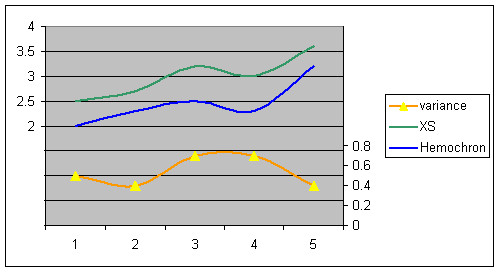A few days ago, I proposed testing with two strips - one test taken within fifteen seconds of incision, the other taken much later.
I did just that:
First test - within fifteen seconds: 4.1
Second test - after a minute or more, not the first drop: 3.9
I used the same lot of strips, and the same meter.
From this single pair of tests, it appears that there is a small difference between first drop/within fifteen seconds, and later drop/a minute or so after incising.
In my case, assuming that my InRatio2 is .5 or so above lab test, both are close enough to my range that I made no change -- but the difference, in this one test, was real (though probably not significant).
I will be comparing Protime with Hemochron in a couple days -- both meters are made by the same company. My tests will be within a few hours of each other. The lab's hemochron will have been calibrated (or at least tested for QC), and it would be interesting if there's much difference between the two. If I feel like I have enough fingertips, I may even do a test using the InRatio 2 to see how it compares.
I did just that:
First test - within fifteen seconds: 4.1
Second test - after a minute or more, not the first drop: 3.9
I used the same lot of strips, and the same meter.
From this single pair of tests, it appears that there is a small difference between first drop/within fifteen seconds, and later drop/a minute or so after incising.
In my case, assuming that my InRatio2 is .5 or so above lab test, both are close enough to my range that I made no change -- but the difference, in this one test, was real (though probably not significant).
I will be comparing Protime with Hemochron in a couple days -- both meters are made by the same company. My tests will be within a few hours of each other. The lab's hemochron will have been calibrated (or at least tested for QC), and it would be interesting if there's much difference between the two. If I feel like I have enough fingertips, I may even do a test using the InRatio 2 to see how it compares.




